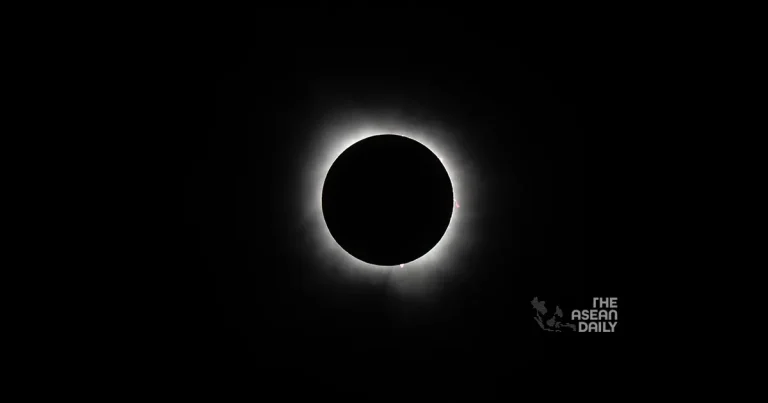9-4-2024 (MAZATLAN) Skywatchers across North America beheld a spectacular celestial event on April 8 as the first total solar eclipse in seven years made its grand entrance. Mazatlán, a picturesque beachside resort town in Mexico, emerged as a prime viewing location along the anticipated “path of totality.” Thousands congregated along the coastal promenade, equipped with solar-safe eyewear, eagerly awaiting the awe-inspiring spectacle.
As an orchestra serenaded the crowd with the iconic “Star Wars” theme, cheers erupted as the eclipse transitioned into totality. Where skies remained clear, observers were treated to the rare phenomenon of the moon casting its shadow upon the sun, momentarily cloaking it save for a radiant halo known as the corona.
The duration of totality, spanning up to 4 1/2 minutes depending on the observer’s vantage point, was accompanied by an array of eerie eclipse effects. Across most of the continental United States, a partial eclipse unfolded, adding to the celestial spectacle.
Among the throngs in Mazatlán was Lourdes Corro, who embarked on a 10-hour journey by car to witness the event. Recalling her childhood experience of an eclipse, Corro expressed her excitement despite the presence of a few clouds.
Eclipse enthusiasts gathered at various points along the “path of totality,” extending from Mexico’s Pacific Coast through Texas and traversing 14 other US states into Canada. In upstate New York, families adorned in eclipse-themed attire convened at the Frontier Town campground, hoping for clear skies to enhance their viewing experience.
Bob and Teresa Love, residents of Connecticut, remained cautiously optimistic as they savoured pastries in the cargo bed of their pickup truck, mindful of the forecasted weather conditions.
With a duration of up to 4 minutes and 28 seconds, the 2024 total eclipse surpassed its predecessor in 2017, offering an extended celestial spectacle. NASA notes that total eclipses can range from mere seconds to approximately 7-1/2 minutes in duration.
Cities along the path of totality, including San Antonio, Austin, and Dallas in Texas, and Indianapolis in Indiana, buzzed with anticipation. Approximately 32 million Americans reside within the path of totality, with an additional 5 million expected to travel to witness the phenomenon.
From bustling urban hubs to quaint rural towns like Advance, Missouri, where residents eagerly awaited totality, eclipse-watching events unfolded across the nation. Tim and Gwen Wurst, recalling their experience of a partial eclipse in 2017, eagerly anticipated the complete darkness of totality.
As experts emphasised the importance of protective eyewear, overcast skies posed a concern for eclipse-chasers. However, forecasts suggested varying conditions across different regions, with some areas offering clearer skies than others.
The transition from the initial stages of the eclipse to totality and back again spanned approximately 80 minutes each way, captivating spectators with each phase of the celestial dance. Veterans of eclipses described the moments preceding totality as surreal, marked by crisp shadows and an uncanny atmosphere.
In the fleeting seconds before totality, phenomena such as “shadow bands” and the appearance of stars in the daytime sky added to the mystique. The “diamond ring effect,” a dazzling display of light, marked the culmination of totality, leaving spectators in awe of nature’s grandeur.




